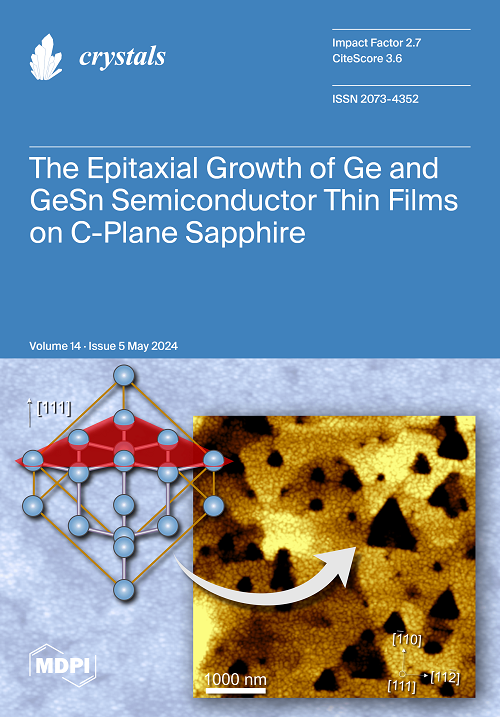使用广义梯度逼近法--Perdew-Burke-Ernzerhof,研究 Ca、Ba、Be、Mg 和 Sr 取代对 XNb2Bi2O9 电子和光学特性的影响,以实现能量转换应用
IF 2.4
4区 材料科学
Q2 CRYSTALLOGRAPHY
引用次数: 0
摘要
铋层结构铁电体(BLSFs)又称奥里维利相材料,是高能效应用,尤其是太阳能电池的理想材料。本研究首次对 XNb2Bi2O9(X = Ca、Ba、Be、Mg、Sr)的结构、电子和光学特性进行了全面详细的理论研究。研究采用 Perdew-Burke-Ernzerhof 方法和广义梯度近似(GGA)来深入研究化合物的结构、带隙、光学和电子特性。从光伏学的角度出发,深入研究了光导率、带拓扑结构、介电常数、带隙值、吸收系数、反射率、消光系数、折射率以及部分态密度和总态密度。该材料表现出明显的行为特征,包括显著的光学各向异性,在可见光区域的吸收系数大于 105 cm-1,观察到紫外线能量,介电常数虚部在可见光和红外区域的透明度升高,并在光学光谱中检测到由带间跃迁引起的峰值。根据所报告的数据,XNb2Bi2O9(X = Ca、Ba、Be、Mg 和 Sr)显然是太阳能转换应用的合适候选材料。本文章由计算机程序翻译,如有差异,请以英文原文为准。
Effect of Ca, Ba, Be, Mg, and Sr Substitution on Electronic and Optical Properties of XNb2Bi2O9 for Energy Conversion Application Using Generalized Gradient Approximation–Perdew–Burke–Ernzerhof
Bismuth layered structure ferroelectrics (BLSFs), also known as Aurivillius phase materials, are ideal for energy-efficient applications, particularly for solar cells. This work reports the first comprehensive detailed theoretical study on the fascinating structural, electronic, and optical properties of XNb2Bi2O9 (X = Ca, Ba, Be, Mg, Sr). The Perdew–Burke–Ernzerhof approach and generalized gradient approximation (GGA) are implemented to thoroughly investigate the structural, bandgap, optical, and electronic properties of the compounds. The optical conductivity, band topologies, dielectric function, bandgap values, absorption coefficient, reflectivity, extinction coefficient, refractive index, and partial and total densities of states are thoroughly investigated from a photovoltaics standpoint. The material exhibits distinct behaviors, including significant optical anisotropy and an elevated absorption coefficient > 105 cm−1 in the region of visible; ultraviolet energy is observed, the elevated transparency lies in the visible and infrared regions for the imaginary portion of the dielectric function, and peaks in the optical spectra caused by inter-band transitions are detected. According to the data reported, it becomes obvious that XNb2Bi2O9 (X = Ca, Ba, Be, Mg, and Sr) is a suitable candidate for implementation in solar energy conversion applications.
求助全文
通过发布文献求助,成功后即可免费获取论文全文。
去求助
来源期刊

Crystals
CRYSTALLOGRAPHYMATERIALS SCIENCE, MULTIDIS-MATERIALS SCIENCE, MULTIDISCIPLINARY
CiteScore
4.20
自引率
11.10%
发文量
1527
审稿时长
16.12 days
期刊介绍:
Crystals (ISSN 2073-4352) is an open access journal that covers all aspects of crystalline material research. Crystals can act as a reference, and as a publication resource, to the community. It publishes reviews, regular research articles, and short communications. Our aim is to encourage scientists to publish their experimental and theoretical results in as much detail as possible. Therefore, there is no restriction on article length. Full experimental details must be provided to enable the results to be reproduced. Crystals provides a forum for the advancement of our understanding of the nucleation, growth, processing, and characterization of crystalline materials. Their mechanical, chemical, electronic, magnetic, and optical properties, and their diverse applications, are all considered to be of importance.
 求助内容:
求助内容: 应助结果提醒方式:
应助结果提醒方式:


